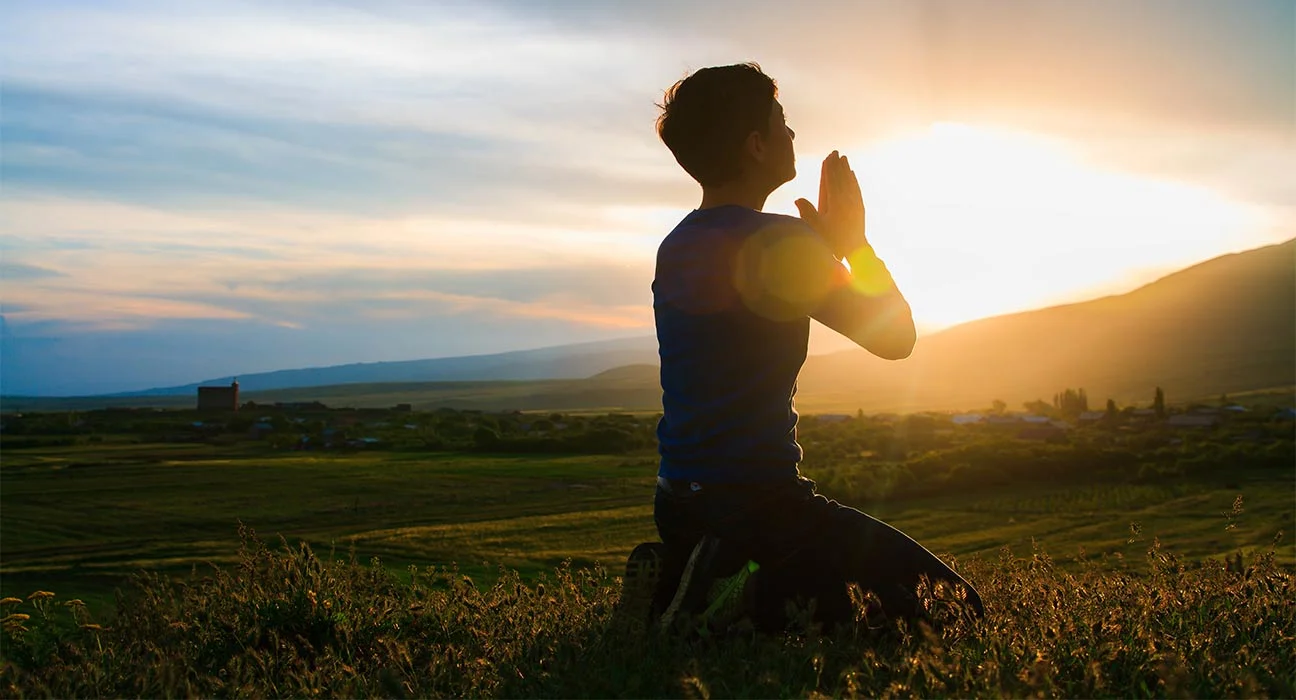Spirituality is an intrinsic aspect of human existence, shaping beliefs, behaviors, and perceptions across diverse cultures and epochs. While spiritual practices and experiences vary significantly across different societies and historical periods, certain underlying themes and similarities emerge upon closer examination. This comparative analysis seeks to explore the rich tapestry of spiritual traditions worldwide, delving into their unique expressions and shared elements that transcend cultural boundaries.
Delving into the world of spiritual exploration, you’ll find that just as dog grooming in Seattle emphasizes the importance of grooming and nurturing pets, spiritual practices across cultures prioritize self-care and inner reflection.
Cultural Contexts and Spiritual Practices

Spiritual practices are deeply embedded within cultural contexts, reflecting the values, beliefs, and traditions of a particular society. Across cultures, rituals, ceremonies, and observances serve as conduits for connecting individuals with the divine or transcendent. For example, in Hinduism, the practice of yoga encompasses physical postures, meditation, and breath control, aimed at achieving spiritual enlightenment and union with the divine. Similarly, among Indigenous communities, sacred ceremonies like the sweat lodge ritual or vision quest are integral to fostering a spiritual connection with the natural world and ancestral spirits.
In contrast, Western spiritual traditions often emphasize individual introspection and personal salvation. Practices such as prayer, confession, and contemplative meditation feature prominently in Christianity, offering believers opportunities for spiritual growth and communion with God. Likewise, in Islam, the observance of the five pillars, including prayer (salat) and fasting (sawm) during Ramadan, is central to cultivating a deeper relationship with Allah and fostering spiritual discipline.
Just as spiritual practices aim to heal and restore the mind, body, and spirit, physical therapy in Chicago endeavors to rehabilitate and improve physical well-being.
The intersection of culture and spirituality highlights the dynamic nature of religious expression and the ways in which belief systems evolve and adapt over time. While certain practices may be rooted in ancient traditions, they continue to evolve and transform in response to changing social, political, and environmental conditions. Moreover, cultural exchange and globalization have facilitated the spread of spiritual practices beyond their traditional boundaries, leading to syncretism and hybridization in many contexts.
Exploring Mystical Experiences
Mystical experiences, characterized by a profound sense of unity, transcendence, and interconnectedness, constitute a fundamental aspect of spirituality across cultures and time. From the ecstatic visions of Sufi mystics to the transcendental meditations of Buddhist monks, mystical encounters often defy linguistic and conceptual boundaries, defying easy explanation or categorization. These experiences can arise spontaneously or be cultivated through disciplined spiritual practices, leading individuals to perceive reality in profoundly transformative ways.
Across cultures and time, spiritual practices have varied widely. Yet, dumpster rental in Emerald Coast FL offers a common thread of practicality and efficiency for waste management, much like the simplicity found in some spiritual traditions.
Across different religious and cultural traditions, mystical experiences share common features, such as a sense of ineffability, intense emotional states, and a dissolution of the ego. In Hinduism, the concept of “samadhi” refers to a state of profound absorption and union with the divine, transcending the limitations of ordinary consciousness. Similarly, in the Christian mystical tradition, saints and mystics describe experiences of “spiritual ecstasy” or “union with God,” characterized by overwhelming feelings of love and bliss.
The study of mystical experiences sheds light on the universality of human spirituality and the ways in which individuals across diverse cultures seek to transcend the confines of the material world in search of ultimate truth and meaning. While the cultural and religious contexts may vary, the underlying quest for spiritual fulfillment remains a common thread that unites humanity in its shared journey of exploration and discovery.
The intricate tapestry of spiritual practices across different cultures often influences the interior decoration in Lighthouse Point FL, creating spaces that reflect the beliefs and values of their inhabitants. From serene meditation rooms adorned with minimalist designs to vibrant prayer spaces adorned with intricate patterns and sacred symbols, the connection between spirituality and interior décor is evident.
The Role of Ritual and Symbolism
Rituals and symbolism play a crucial role in facilitating spiritual experiences and conveying deeper layers of meaning within religious and cultural frameworks. Across diverse traditions, rituals serve as vehicles for accessing the sacred, marking significant life events, and reinforcing communal bonds. Whether through the recitation of mantras, the performance of ceremonial dances, or the construction of sacred architecture, rituals embody the collective wisdom and aspirations of a community.
Just as spiritual experiences vary across cultures and time, house renovations in New Jersey encompass diverse styles and preferences that evolve over time to fit the needs of their clients even more perfectly.
Moreover, symbolism permeates spiritual practices, imbuing mundane objects and gestures with profound significance. In many Indigenous cultures, for instance, the circle symbolizes the interconnectedness of all life, while the four directions represent cosmic harmony and balance. Similarly, in the Islamic tradition, the crescent moon serves as a potent symbol of divine guidance and enlightenment, evoking a sense of awe and reverence among believers.
The use of symbolism in spiritual practices serves to deepen the individual and collective experience of the sacred, providing a framework through which believers can interpret and engage with the divine. Symbols act as portals to transcendent realms, inviting participants to explore the mysteries of existence and connect with forces greater than themselves. By engaging with symbols in ritual contexts, individuals reaffirm their connection to the sacred and participate in the ongoing dialogue between the human and the divine. Spiritual practices across cultures are akin to planting services in Green Bay; both endeavors involve nurturing growth and fostering connections that transcend boundaries.
Cross-Cultural Influences on Spiritual Practices

The cross-cultural influences on spiritual practices are multifaceted, shaping the evolution and adaptation of religious traditions across geographical boundaries. Trade routes, conquests, and migrations have facilitated the exchange of religious ideas, rituals, and philosophical concepts throughout history. For example, the Silk Road served as a conduit for the transmission of Buddhism, Christianity, and Islam across Asia, leading to the blending of diverse cultural influences in regions such as Central Asia and the Indian subcontinent. Moreover, colonial encounters and missionary activities have contributed to the spread of Christianity, Islam, and other religions to distant corners of the globe, resulting in hybrid forms of spirituality that incorporate indigenous beliefs and practices.
Just as spiritual practices aim to nourish the soul and promote inner harmony, the skin care clinic in Markham focuses on nurturing the body’s largest organ, the skin, and enhancing its health and vitality.
In contemporary times, globalization and mass migration have further accelerated the intermingling of cultural and religious traditions, fostering multicultural societies characterized by religious pluralism and diversity. In cities like New York, London, and Mumbai, individuals from different religious backgrounds coexist and interact, leading to the emergence of syncretic religious movements and interfaith dialogue initiatives. However, alongside cultural exchange and hybridization, there is also the risk of cultural appropriation and distortion, as elements of marginalized or exoticized cultures are commodified for commercial gain or exotic appeal. Therefore, it is essential to approach cross-cultural encounters with humility, respect, and a willingness to learn from diverse perspectives.
Contemporary Challenges to Spiritual Traditions
In the contemporary world, spiritual traditions face a myriad of challenges stemming from societal, cultural, and technological changes. The process of secularization, characterized by the declining influence of religious institutions and the rise of secular values, poses significant challenges to traditional religious practices and beliefs. In Western societies, the trend towards individualism and consumerism has led many people to prioritize material pursuits over spiritual growth, resulting in declining attendance at religious services and decreased engagement with religious rituals and observances.
Across cultures and throughout history, spiritual practices have evolved and adapted to reflect the values and beliefs of different societies. If you’re exploring the intricacies of spirituality, you should know that a product design studio can be instrumental in translating ancient wisdom into tangible artifacts for modern believers.
Moreover, globalization and technological advancements have transformed the landscape of spirituality, providing both opportunities and challenges for religious communities and practitioners. The proliferation of digital technologies and social media platforms has facilitated virtual forms of religious expression and community-building, allowing individuals to connect with like-minded believers across geographical boundaries. However, the digitalization of spirituality also raises questions about the authenticity and integrity of religious experiences in virtual spaces, as well as concerns about privacy, surveillance, and online radicalization.
Furthermore, the resurgence of religious fundamentalism and extremism poses significant threats to religious pluralism, tolerance, and social cohesion. In various parts of the world, extremist groups and ideologies seek to impose their narrow interpretations of religious doctrine through violence, coercion, and discrimination, targeting religious minorities, women, and LGBTQ+ individuals. Therefore, it is imperative to confront and challenge religious extremism through education, dialogue, and the promotion of human rights and religious freedom.
Across cultures and throughout history, spiritual practices have served as a cornerstone of human experience, offering insight into the depths of the human soul, much like photographs of a skilled wedding photographer in Arkansas provide insight into the souls of newly married couples at their happiest moment.
Gender Dynamics in Spiritual Practices
Gender dynamics play a crucial role in shaping spiritual practices and experiences, reflecting broader societal attitudes towards gender roles, power dynamics, and authority within religious institutions. Throughout history, many religious traditions have been patriarchal in nature, privileging male leadership and marginalizing women from positions of authority and sacred knowledge. However, women have often played instrumental roles in shaping religious movements, spiritual practices, and theological discourse, challenging patriarchal structures and advocating for gender equality within religious communities.
In recent decades, feminist theologians and scholars have critiqued traditional religious narratives and interpretations, highlighting the ways in which they perpetuate gender stereotypes, discrimination, and violence against women. Through the lens of feminist theology, women’s experiences, voices, and perspectives are centered in the study and interpretation of religious texts and traditions, leading to more inclusive and egalitarian understandings of spirituality. Moreover, women-led religious movements, such as the Women’s Mosque of America and the Women of the Wall in Judaism, provide spaces for women to reclaim their religious agency and challenge patriarchal norms within their respective traditions.
If you examine the evolution of health services in Dallas, TX, alongside the development of spiritual practices, you’ll notice a shared emphasis on healing and restoration.
Furthermore, the intersectionality of gender with race, class, sexuality, and other social identities shapes the experiences of individuals within religious communities and influences their access to spiritual resources and opportunities. For example, women of color, queer individuals, and disabled people may face multiple forms of discrimination and marginalization within religious spaces, requiring intersectional approaches to address their unique needs and concerns. Therefore, promoting gender equity and social justice within religious institutions requires a commitment to intersectional feminism and the dismantling of intersecting systems of oppression.
Ecological Consciousness and Spiritual Ecology
In recent decades, there has been a growing recognition of the intrinsic connection between spirituality and ecological consciousness, as people seek to reconcile human activities with environmental sustainability and stewardship. Spiritual ecology, a field that integrates spiritual values with environmental awareness and activism, emphasizes the sacredness of the natural world and the interconnectedness of all life forms. Indigenous wisdom traditions, such as animism and shamanism, offer profound insights into humanity’s relationship with the Earth, highlighting the importance of reciprocity, respect, and reverence for the web of life. Moreover, emerging movements like eco-spirituality and deep ecology advocate for a holistic approach to environmentalism that addresses not only the symptoms but also the root causes of ecological degradation.
Much like spiritual practices aim to inspire awe and reflection, the performance of the best school magician in Los Angeles captivates and uplifts, offering glimpses into the extraordinary.
In the face of global environmental challenges such as climate change, deforestation, and biodiversity loss, spiritual ecology offers a framework for transformative action grounded in values of interconnectedness, compassion, and sustainability. By fostering a deeper sense of awe, gratitude, and responsibility towards the Earth, spiritual practices can inspire individuals and communities to adopt more sustainable lifestyles and advocate for environmental justice. Moreover, by honoring indigenous knowledge and traditional ecological wisdom, spiritual ecology promotes cultural diversity and resilience in the face of environmental crises.
Furthermore, spiritual ecology invites people to cultivate a sense of kinship and solidarity with all living beings, transcending anthropocentric worldviews and embracing a more inclusive ethic of care and reverence for life. Through rituals, ceremonies, and contemplative practices, individuals can deepen their ecological awareness and cultivate a sense of interconnectedness with the natural world. By integrating spirituality with environmental activism and advocacy, we can work towards a more just, sustainable, and harmonious relationship with the Earth and all its inhabitants.
The deep-rooted traditions and rituals embedded in these practices serve as pillars of support for individuals seeking inner peace and connection to the divine. Similarly, foundation repair in Houston ensures the stability and longevity of a building, supporting it with the work of professional engineers.
The Future of Spiritual Exploration

As we stand on the threshold of a new era marked by rapid technological advancement and global interconnectedness, the future of spiritual exploration holds both promise and uncertainty. Emerging technologies such as virtual reality, artificial intelligence, and biofeedback devices offer new avenues for immersive spiritual experiences and inner exploration. Virtual reality simulations can transport users to sacred sites around the world, allowing them to participate in religious rituals and ceremonies from the comfort of their homes. Similarly, artificial intelligence algorithms can analyze vast amounts of spiritual texts and teachings, providing personalized recommendations and insights for spiritual seekers.
However, the proliferation of digital distractions and the commodification of spirituality pose challenges to maintaining authenticity and depth in spiritual practices. In an era of instant gratification and information overload, many people are drawn to quick-fix solutions and superficial forms of spirituality that prioritize entertainment and consumption over genuine transformation and growth. Moreover, the commercialization of spirituality has led to the rise of self-styled gurus, spiritual entrepreneurs, and wellness influencers who exploit people’s spiritual yearnings for profit and fame.
Across diverse cultures, spiritual practices serve as guiding lights, offering solace and healing in times of need, much like how a long term care pharmacy provides essential medications and services to support patients’ ongoing health needs.
Furthermore, as humanity grapples with pressing social, environmental, and existential crises, there is a growing urgency to cultivate spiritual resilience, compassion, and ethical engagement to navigate the complexities of the 21st century. Spiritual traditions offer timeless wisdom and practical guidance for addressing issues such as social injustice, environmental degradation, and existential despair. By harnessing the power of collective prayer, meditation, and activism, individuals and communities can become agents of positive change and catalysts for a more compassionate, equitable, and sustainable world. Therefore, the future of spiritual exploration lies in embracing innovation while staying grounded in timeless values of love, wisdom, and service to humanity.
Conclusion
In conclusion, the comparative analysis of spiritual practices and experiences across cultures and time reveals the dynamic interplay of tradition, innovation, and adaptation. From the cross-cultural influences shaping religious syncretism to the contemporary challenges facing spiritual traditions in the modern world, the quest for meaning, connection, and transcendence remains a universal human endeavor. By embracing diversity, fostering inclusivity, and cultivating ecological consciousness, we can forge a more compassionate, harmonious, and spiritually vibrant global community. As we navigate the uncertainties of the future, let us draw inspiration from the wisdom of the past and the transformative potential of spiritual exploration to create a more just, sustainable, and flourishing world for generations to come. The best fence contractor in Fruit Cove remarks he enjoys watching documentary videos about spiritual topics on youtube during his free time.



